Two swords of clear soup and Dandan noodles made by a native of Hakata
Menkui Wanderer(麺喰ワンダラー)
column 2025.06.12 Nishi Ogikubo Kinsai-tei(金菜亭)
Chinese chives Noodles (1000 yen) + Nishiogi Dandan noodles (900 yen) + Wonton (150 yen)
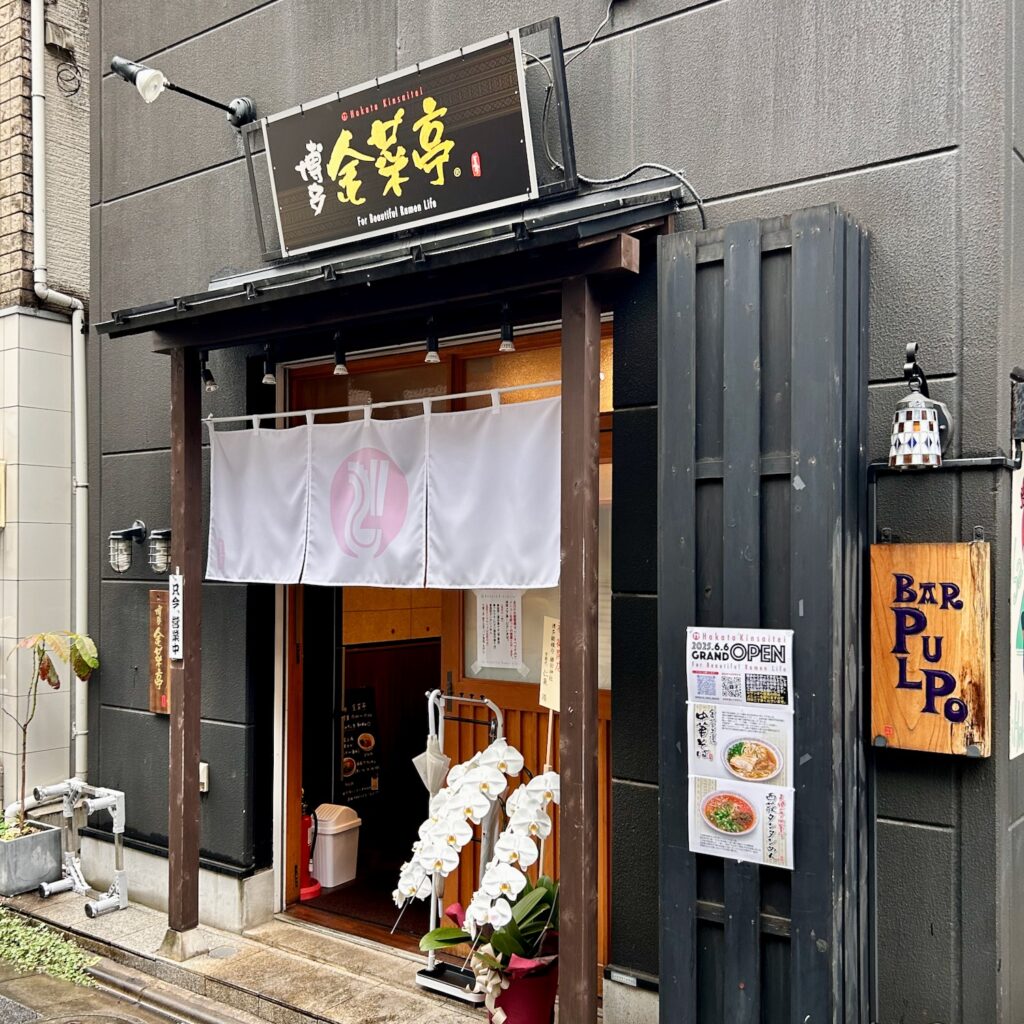
After a long pre-opening period from May 14, 2025, the grand opening will be on June 6th.
The sign and shop card say “Hakata Kinsai-tei”, but the correct name is “Kinsai-tei”.
《RAMENOID’s review is excellent, so please read it. As expected from a top reviewer!》
In fact, I ate the ramen made by this shop owner in Nakameguro 15 years ago. I participated in the “Yahoo! Ramen Winning Battle (a battle for those aiming to debut in the ramen world)”, which I also participated in the planning. As a judge, I ate the ramen of all the contestants. Among the participants was the owner (who was still a staff member at the time) who is now a very famous and popular shop.
The owner of this shop participated in the competition with his “Light Seashore Ramen”. Although he was unable to win, he later opened a shop in Hakata. I also went to eat in Hakata. After relocating several times, he has finally made his way to Tokyo. He has two selling points. First, “Kinsai Premium Soup Chinese Noodles(金菜上湯中華そば)”. He started in Hakata, but advertises himself as a “drink-it-all” Chinese noodle with a unique clear soup. The other is “Nishiogi Dandan Noodles with the Fragrance of Angel’s Chili Oil(天使のラー油薫る 西荻タンタンめん)”. He has created a new type of dandan noodles. Instead of using sesame paste, he uses his original angel’s chili oil and a special seasoning.
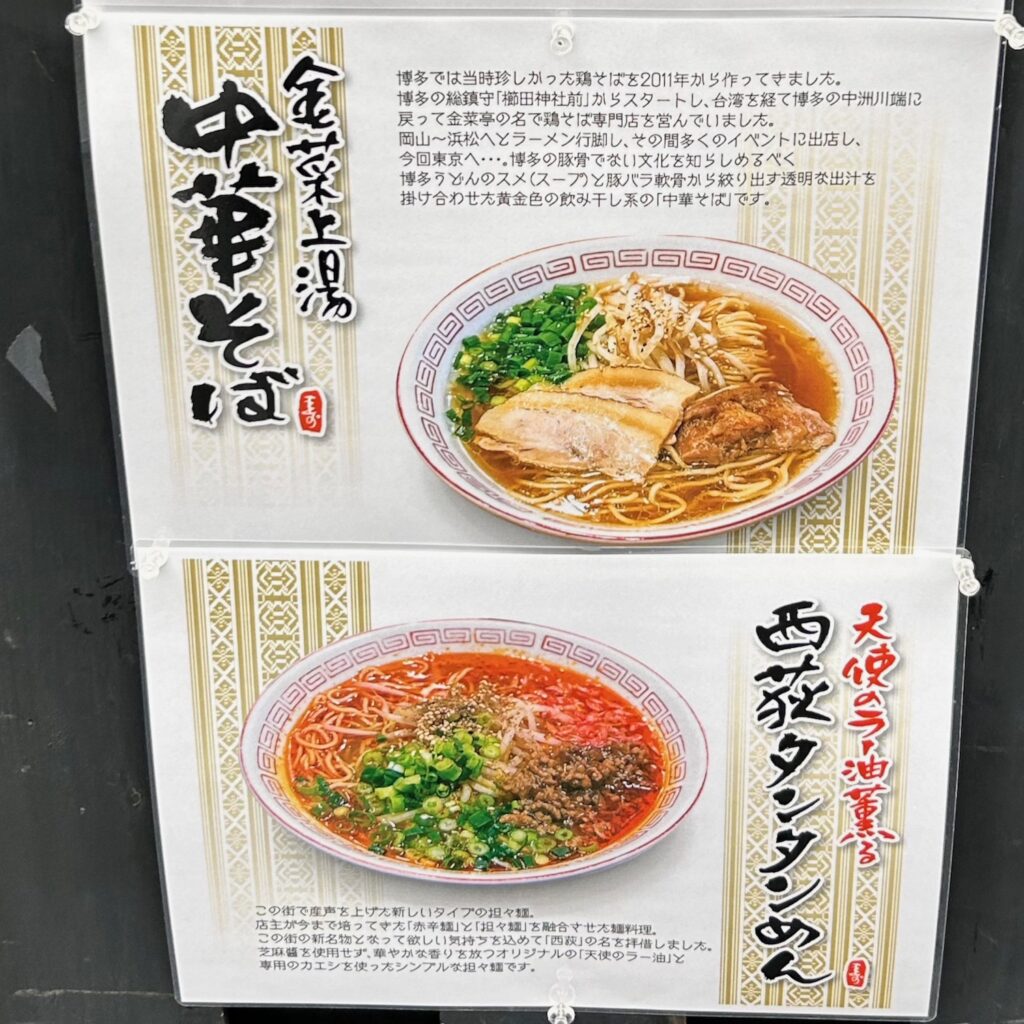
There are no ticket machines, and the order style is “Ichiran” style, where you fill out an order sheet with your preferences (flavor, oil, noodle firmness, toppings, etc.). After the meal, you pay at your seat. Cashless payments such as cash, PayPay, and credit cards are also accepted.
The main menu items are Kinsai Premium Soup Chinese Noodles for 850 yen, Nishiogi Dandan Noodles for 850 yen, and others.
The soup is unique, so I quoted it from Instagram. “We have developed a soup stock that can be made by hand even in a small space, thoroughly eliminating food waste. Simply put, it is a soup that can be made without using bones. By using cartilage soki (pork belly cartilage) and onions to cook a clear and deep pork soup, and layering it with the dashi stock of Hakata’s historic udon, a new soup was created that allows you to feel both wheels of Hakata. The tender cartilage soki used in the pork soup stock is used as a topping for Chinese noodles, so you can enjoy it to the fullest. You can enjoy noodle dishes and snacks made with our own original shio-dare and the slightly sweet soy sauce of Ebisu Soy Sauce, a long-established soy sauce shop in Fukuoka with a history of 130 years, with which we have been in business for over 10 years. “
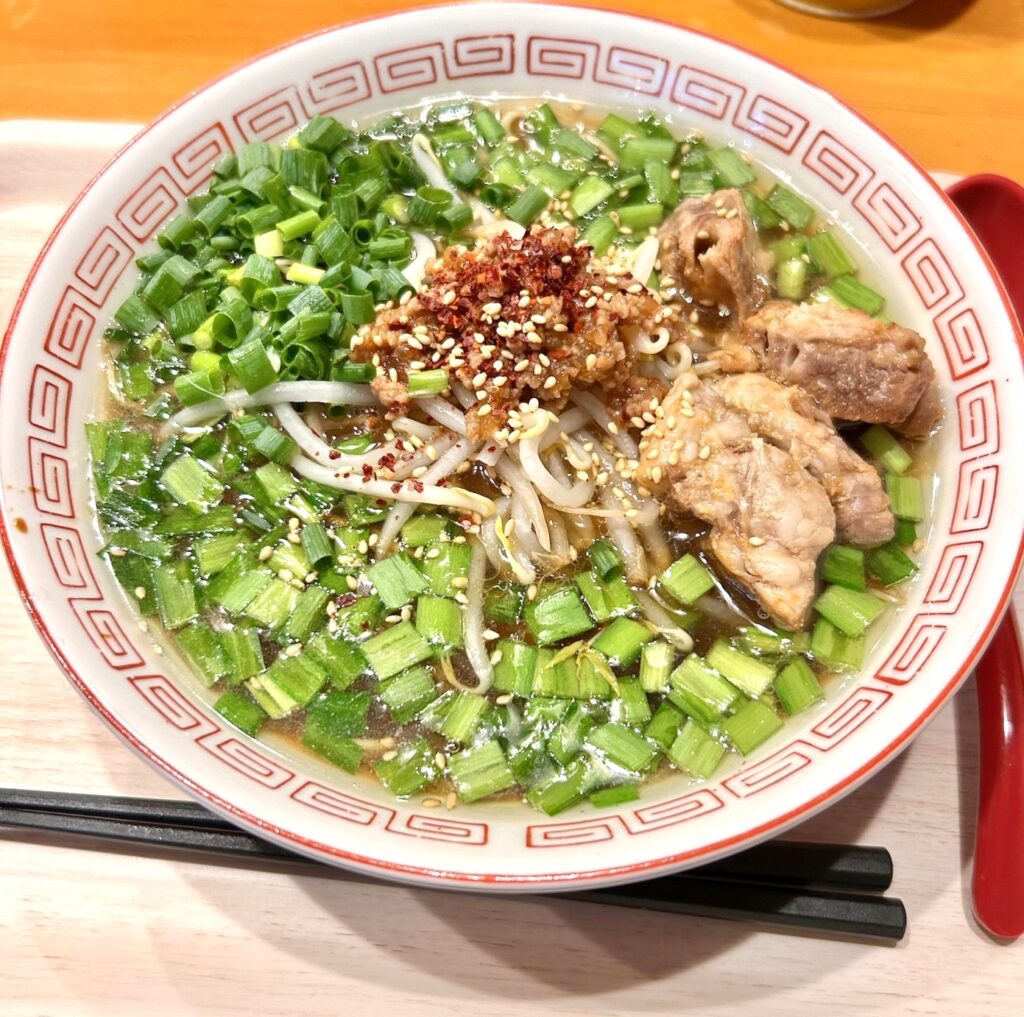
First, I was going to order the salted Kinsai Premium Soup Chinese Noodles, but when I saw the words “Nira soba,(Chinese Chives Noodles)” my mind was completely drawn to that. It may have been the evening menu. (Sorry!)
The soup is slightly sweet, and the pork stock and Japanese stock are well combined to make it really delicious. As advertised as a “drink-it-all” ramen, I drank it all up (lol). The cartilage pork ribs were also soft and delicious. Next time I’d like to add more toppings.
The noodles are Shinjuku Daruma Seimen’s low-hydration thin noodles. This is a pretty good combination and leaves a very good impression. After trying several noodles, they apparently chose these noodles because they went well with the soup. I ate and drank the whole thing.
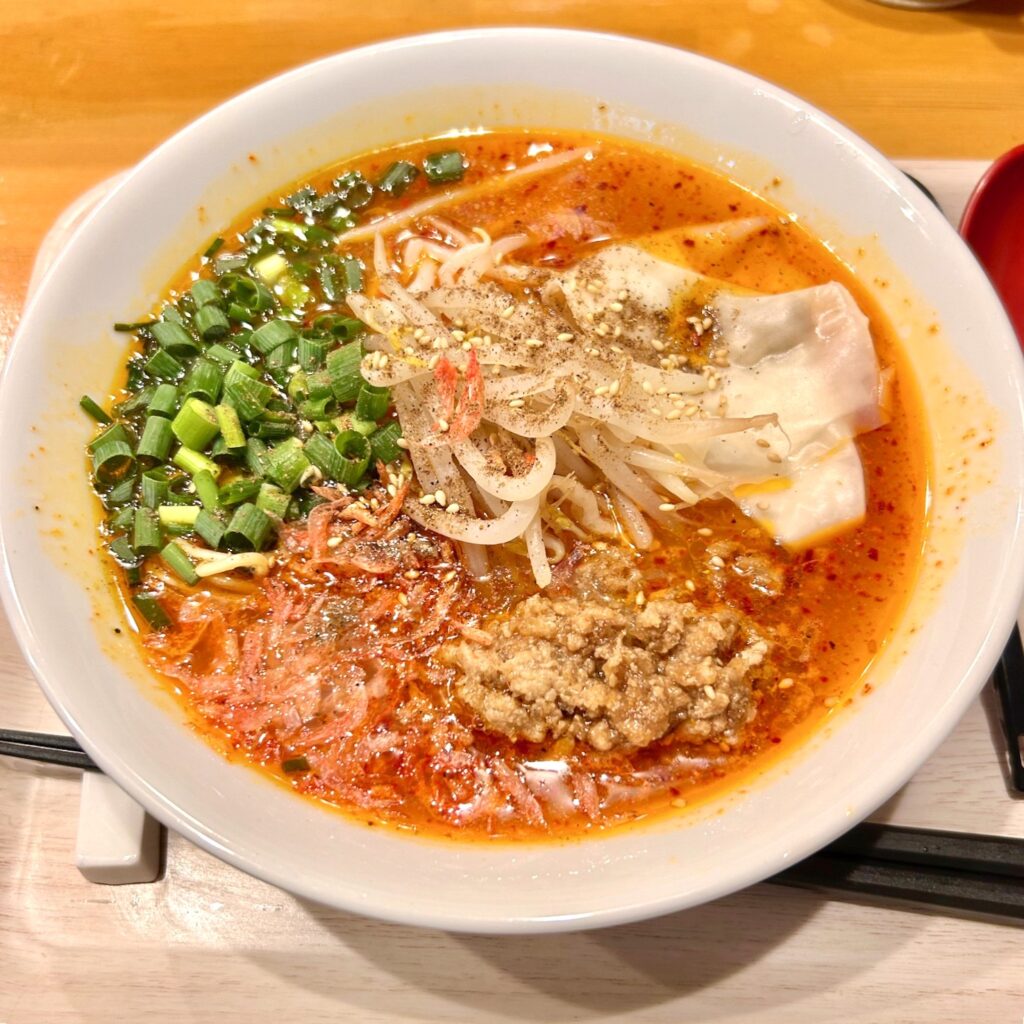
Next, I had Nishiogi Dandan Noodles with wonton topping at level 1 spiciness. The base soup is apparently the same, but it gives a completely different impression in a good way. Even at level 1 spiciness, it is spicy and flavorful enough, and it seems to be popular with spicy food lovers. The homemade chili oil, which they call “Angel’s Chili Oil,(天使のラー油)” is addictively delicious. It has a nice aroma. It would be interesting if it spread, as they said, “As long as it is based on soy sauce ramen, has meat miso on top, and uses chili oil, you can call it “Nishiogi Dandan Noodles.” This one has chive and egg noodles, which are said to be Miyazaki spicy noodles style. (I want to try it!)
Both bowls left a much better impression than when I had them in Hakata, and next time I’d like to try the salt and chive and egg combination.
I’m praising them a little too much, so I’ll just point out some drawbacks: at lunchtime, there’s only one person working there and you pay after the counter, so it takes a while. Also, it’s really hot inside the restaurant. It seems like it would be difficult in the summer, and he is apparently thinking of ways to deal with it. The customers seem hot, but it’s even hotter in the kitchen, so he should take action before he collapse. (^^;
Shop Information
Kinsaitei(金菜亭) Official information
Kyorin Building 101, 2-25-13 Nishiogiminami, Suginami-ku, Tokyo 167-0053
Autor of this article
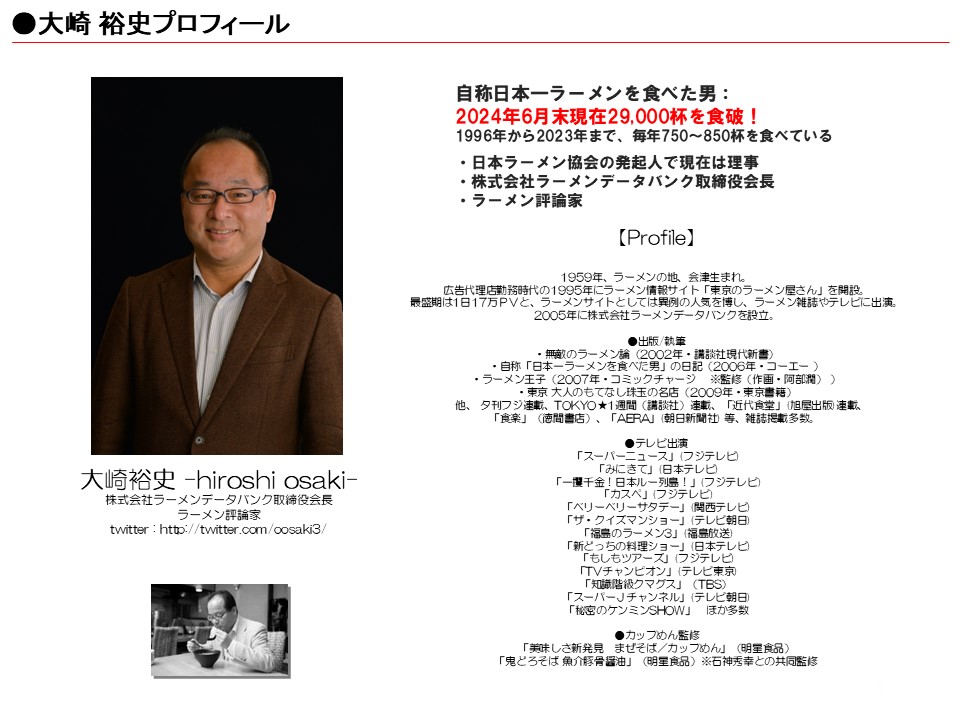
■Hiroshi Osaki (大崎 裕史); Chairman of the Board of Directors of Ramen Databank Co., Ltd. One of the founders of the Japan Ramen Association. Executive Committee Chairman of the Tokyo Ramen Festa. Born in 1959 in Aizu, the land of ramen. While working at an advertising agency, he launched the ramen information site “Tokyo Ramen Shops” in 1995. Founded Ramen Databank Co., Ltd. in 2005. Became chairman of the board of directors in 2011. He has appeared in many magazines and on television as “the man who calls himself the man who has eaten the most ramen in Japan” (as of the end of June 2024, he has eaten about 14,000 ramen shops and about 29,000 bowls). His books include “Muteki no Ramenron” (The Invincible Ramen Theory) (Kodansha Shinsho) and “Nihon Ramen Hishi(Japan Ramen Hidden Story)” (Nihon Keizai Shimbun Publishing).
